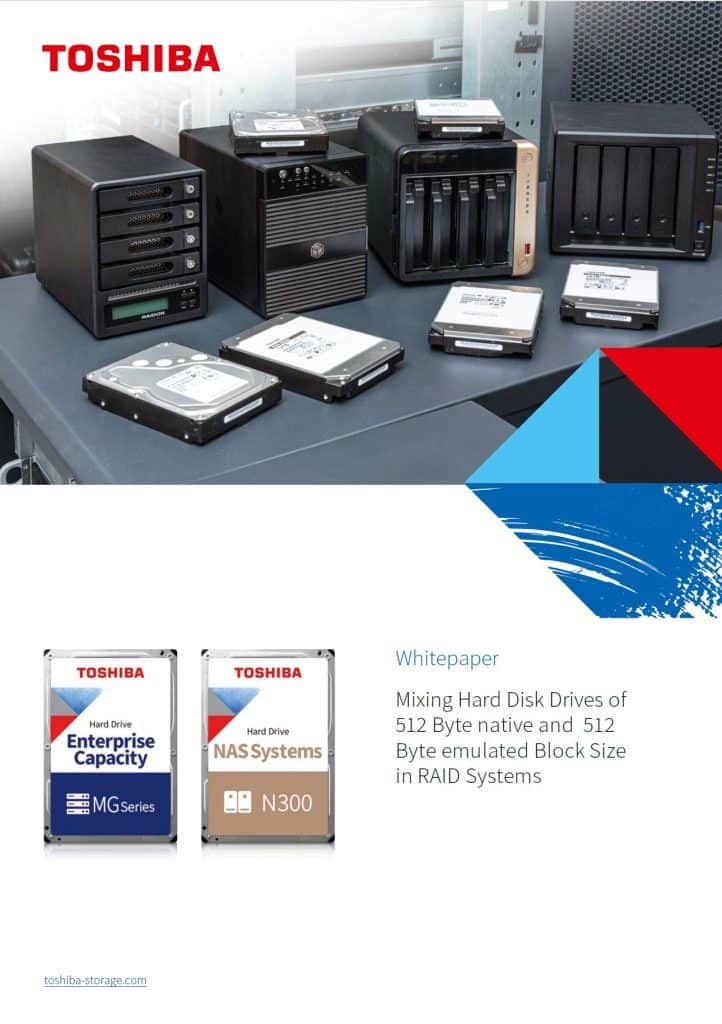Mixing Hard Disk Drives of 512 Byte native and 512 Byte emulated Block Size in RAID Systems
Introduction
Hard Disk Drives (HDDs) for NAS and Enterprise Storage come in two different flavors of block size. Traditionally, the internal block size of HDDs is 512 byte, with 512 byte also used at the external interface. This technology is called 512 byte native, or 512n. Newer HDD models use an internal block size of 4k byte for higher storage efficiency, but still provide 512 byte at the external interface through a transparent emulation process. This technology is called 512 byte emulated (512e). Additionally drives with the 4k byte internal block format at the interface (4k byte native) are available, but these are rare and exclusively used in specific enterprise applications.
512n is still available for older HDD models, and for backwards compatibility reasons for modern HDDs up to 4TB, while modern HDDs of more than 4TB are all 512e.
The report of diagnostics tools like smartmontool (https://www.smartmontools.org/) reports this configuration.
Our Evaluation
In the Toshiba HDD laboratory, we evaluated the flexibility of 512n vs. 512e replacements in RAID systems. A RAID (redundant array of independent disks) combines a bunch of physical hard disk drives into a larger array, typically with some redundancy (parity or mirror). If a drive fails, the RAID controller can rebuild the array information into a replacement drive making use of the parity or mirror information.
Following the emergence of 512e drives, we were curious to know: would an array of 512n drives accept a failing drive being replaced by a 512e drive? To confirm a free mixing of both versions, we also tested the other way round (512n replacing a failing 512e drive).
HDD Setup: The Drives (512n and 512e)
For the evaluation we used the popular Toshiba NAS HDD N300 as the 4TB version with 512n block size, and the Enterprise model of the MG-Series MG08ADA400E with 512e block size. These are the most common 4TB drives and this capacity is often used in smaller RAID sets of typically 2 or 4 bays.
We simulated a failing disk by simply unplugging it under full power and operation (hot-removal), and waiting for 10 minutes while checking the performance and function of the RAID array in this failed drive mode. Then we re-inserted the replacement drives, also under full power, and waited for RAID rebuilding without any power cycle.
RAID System Setups: 4-Bay Desktop NAS and Internal RAID Controller
The two most common implementations of RAID configurations are integrated network attached storage (NAS) boxes, and storage sub-systems in Enterprise servers drives by RAID-Controller PCI-express add-incards. Our evaluation was based on two common 4-bay desktop-NAS models – the QNAP 4-bay Desktop NAS TS-464-4G and the Synology 4-bay Desktop NAS DS-420+.
Download the whole Whitepaper with all results here.
Irina Chan, Senior Specialist Product Marketing Management Storage Products

Rainer W. Kaese, Senior Manager Business Development Storage Products


